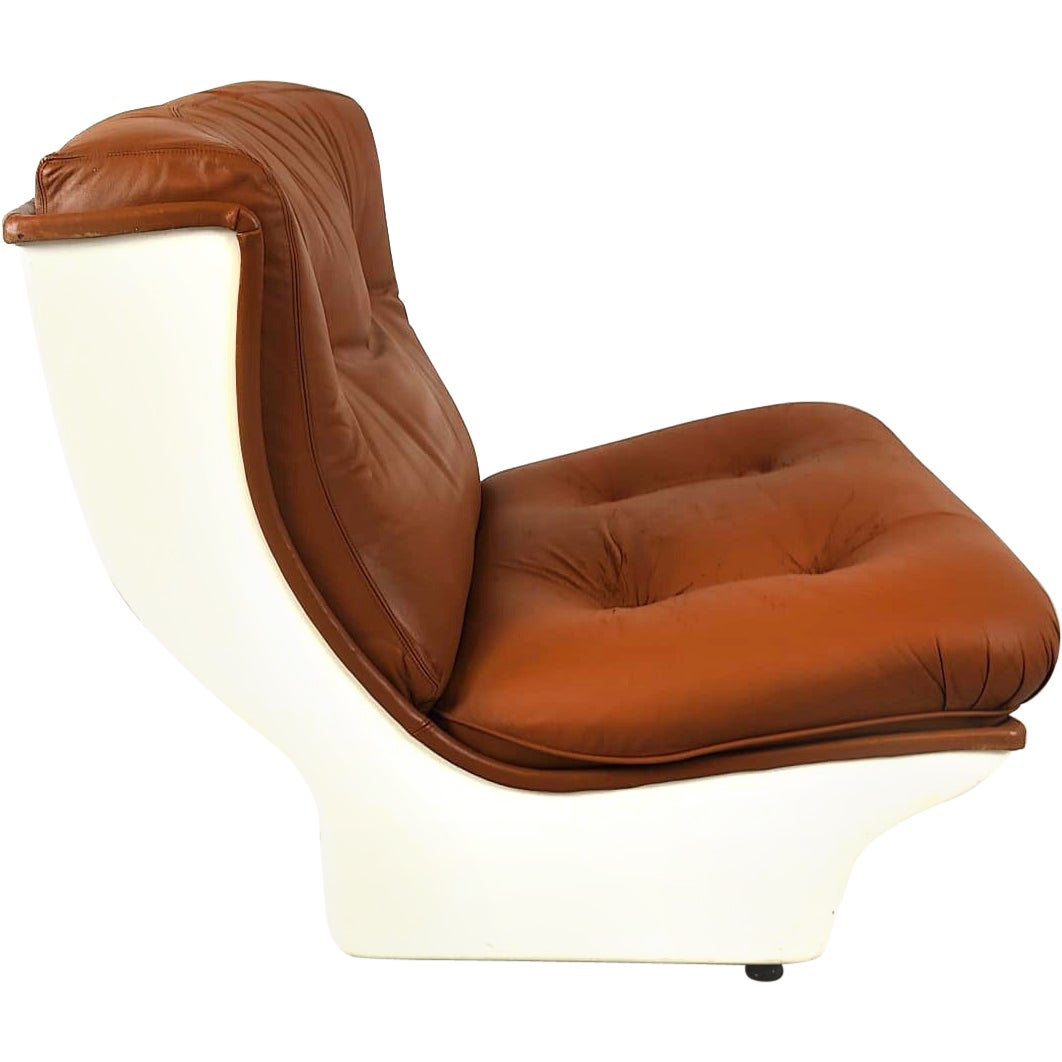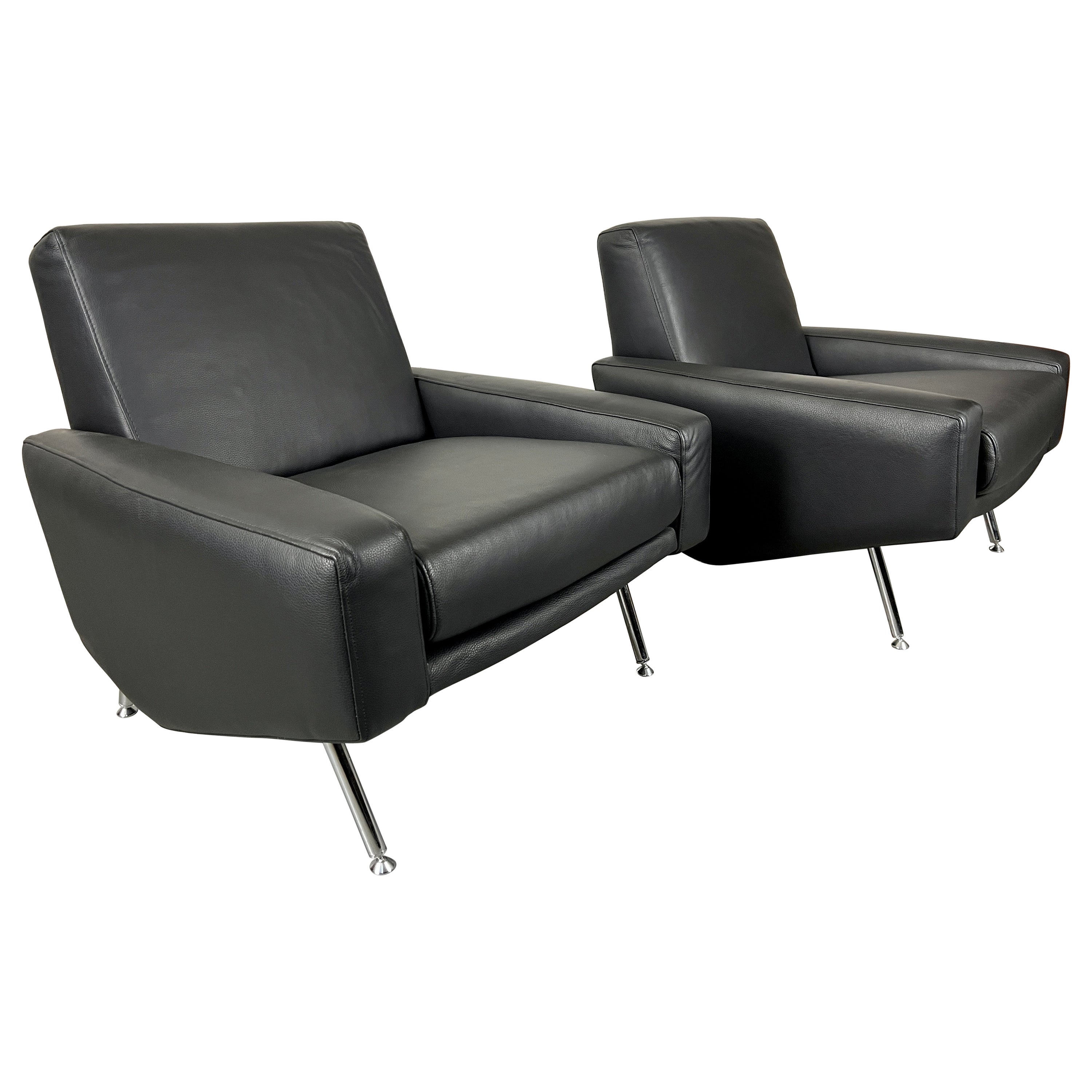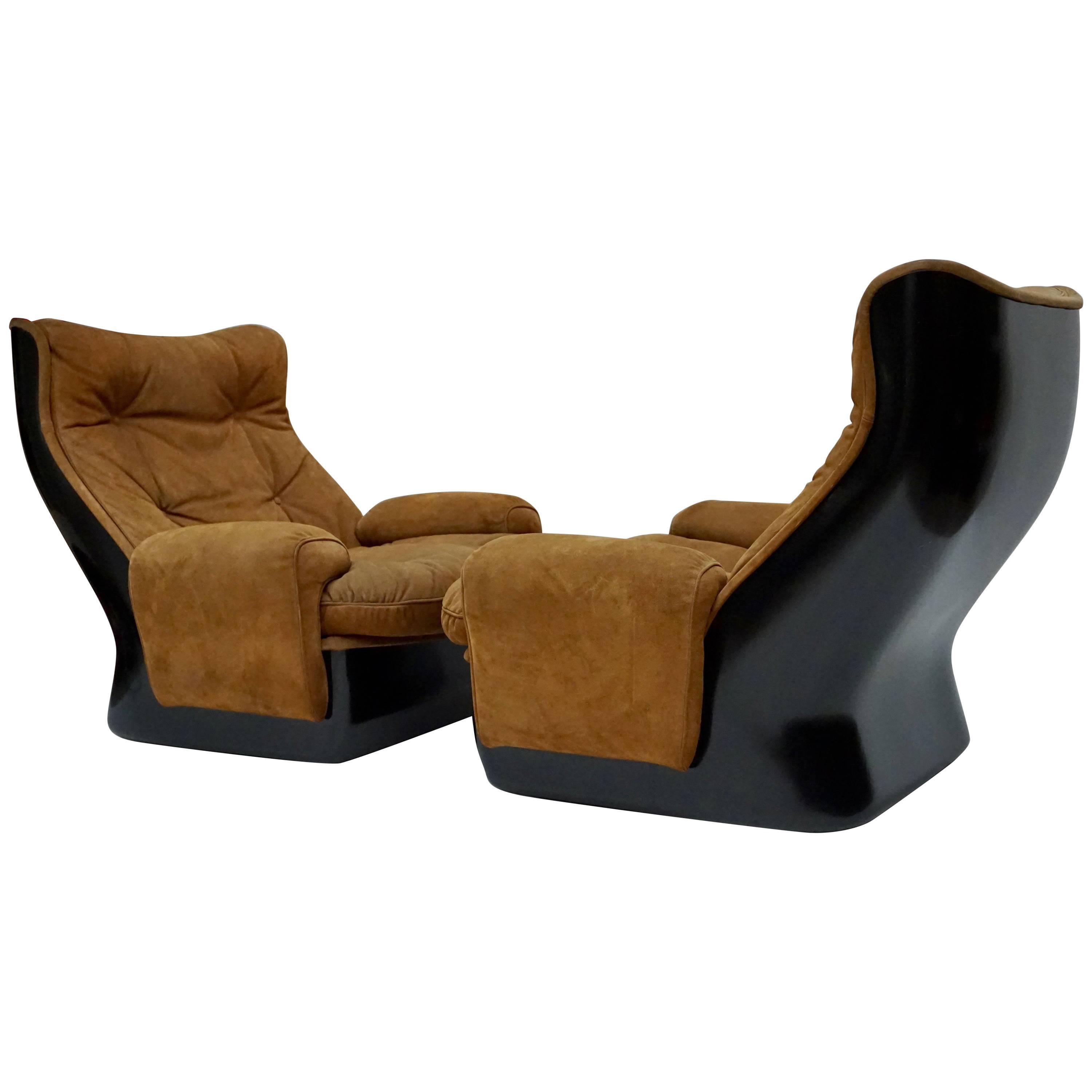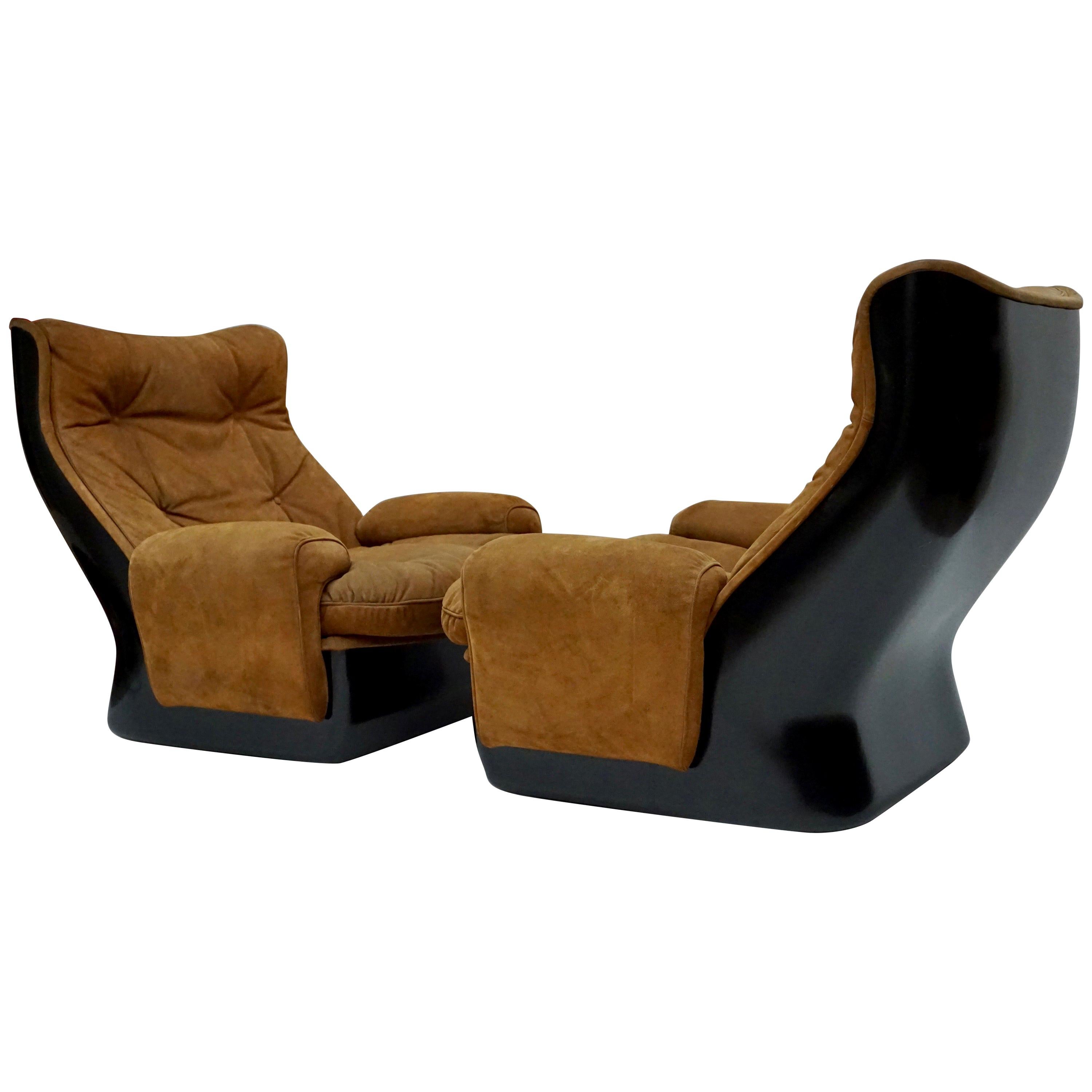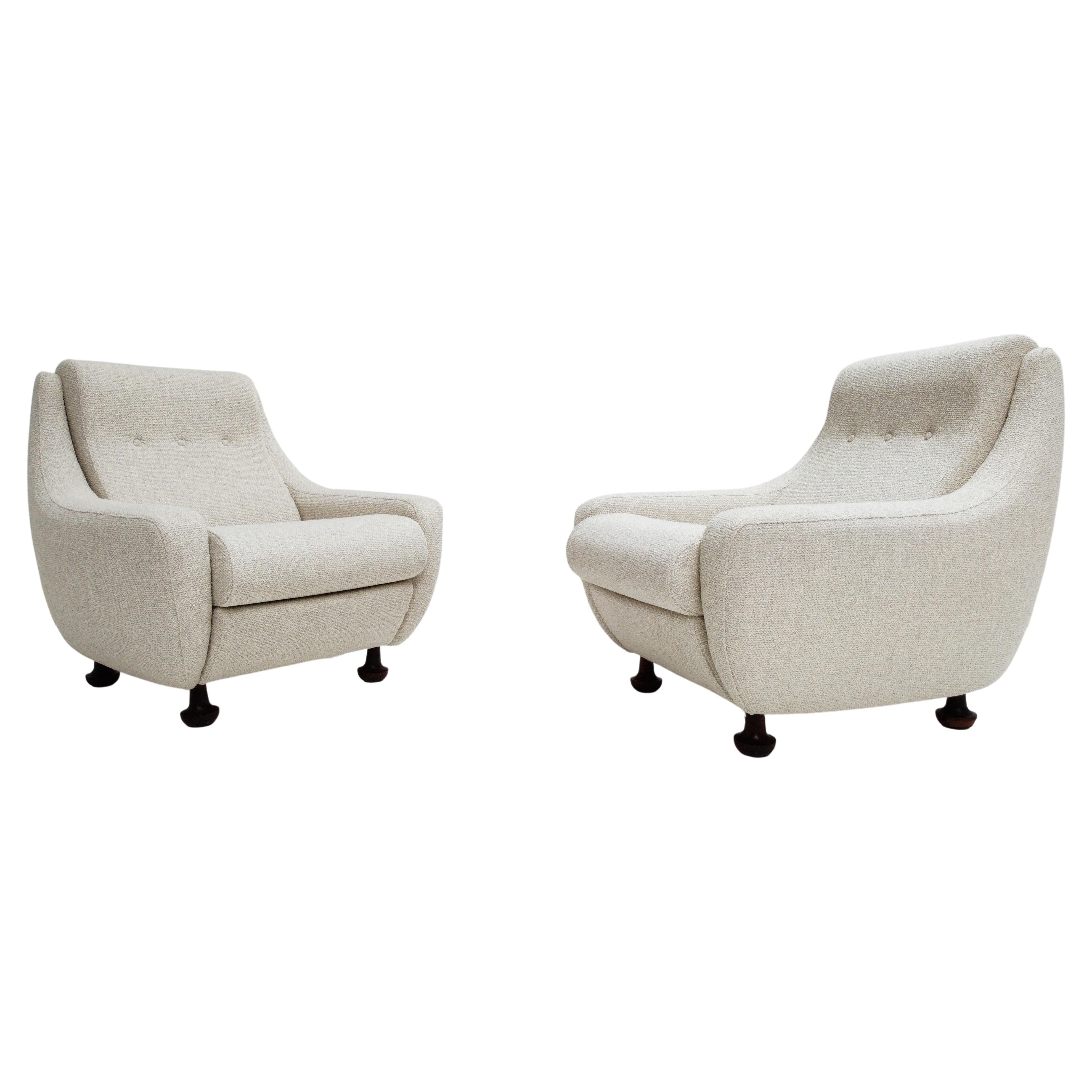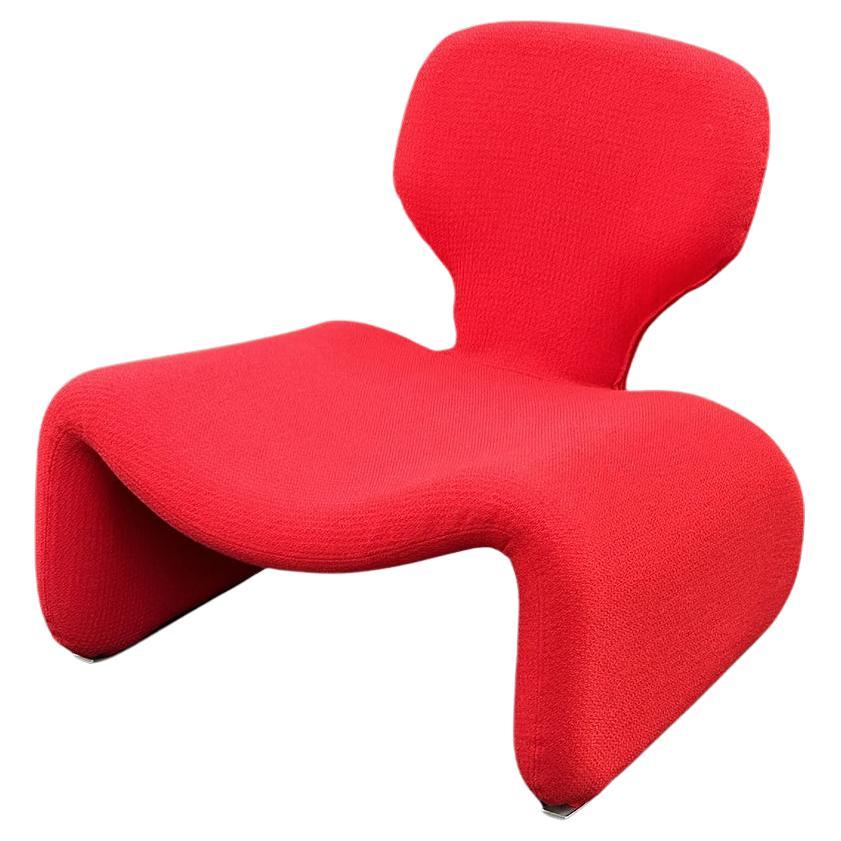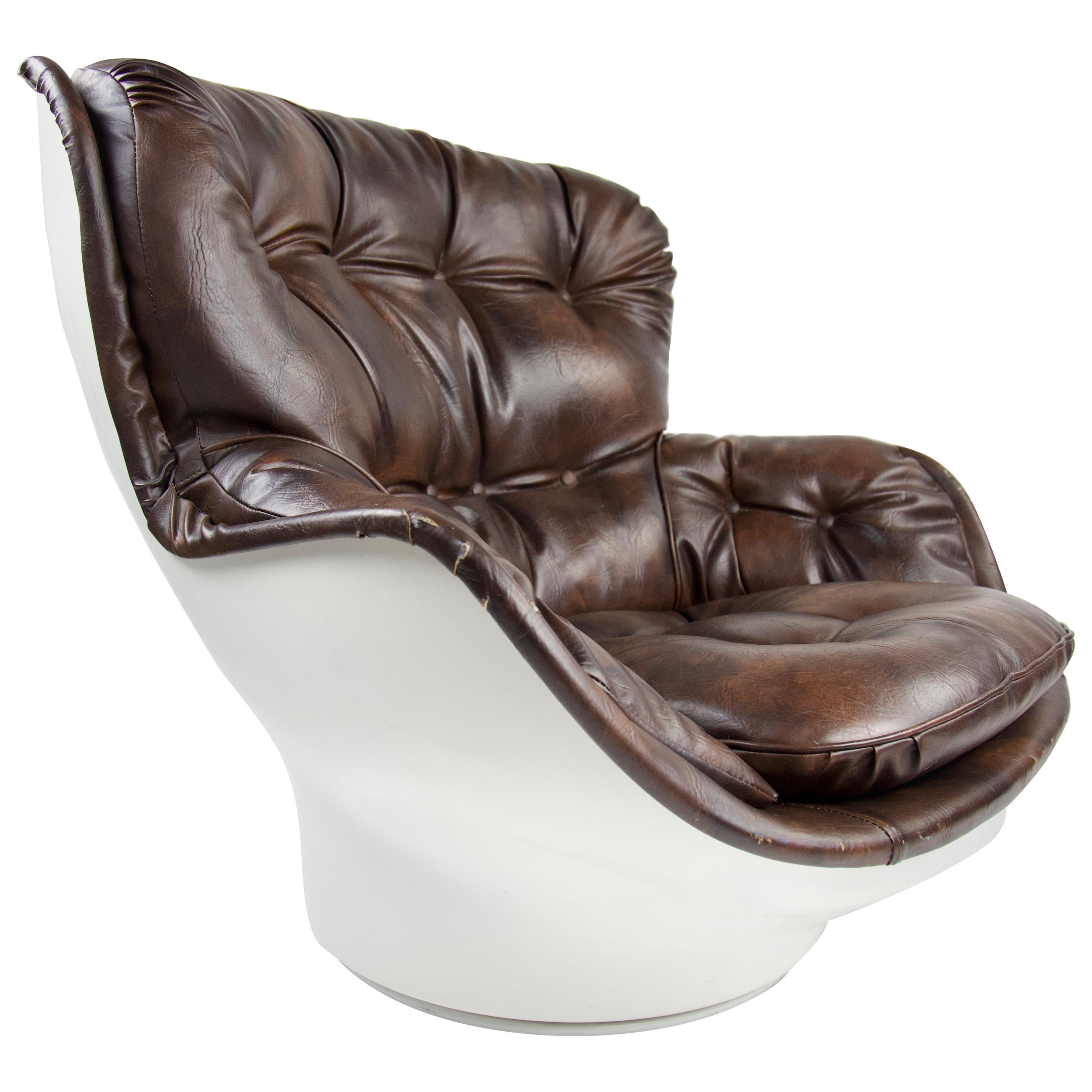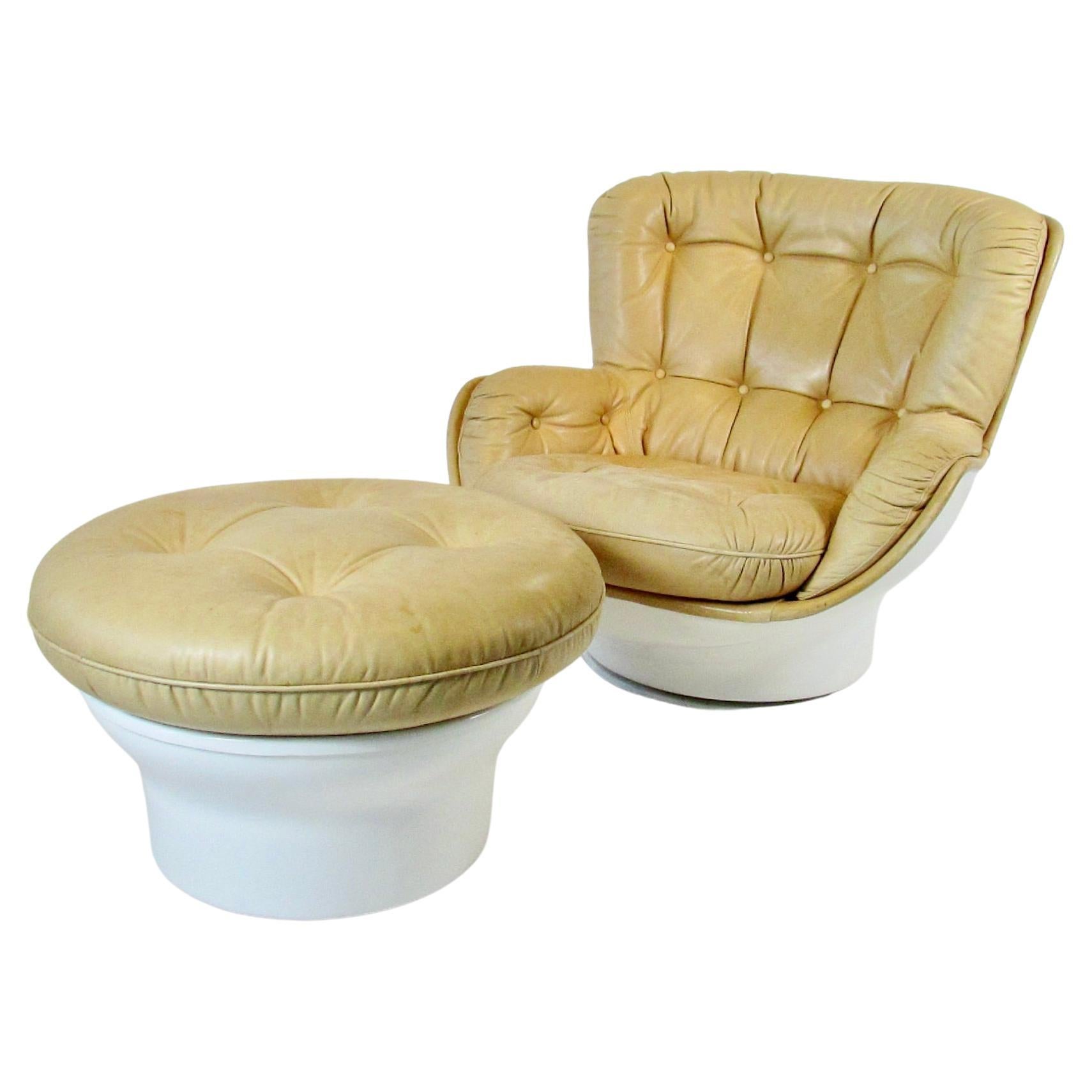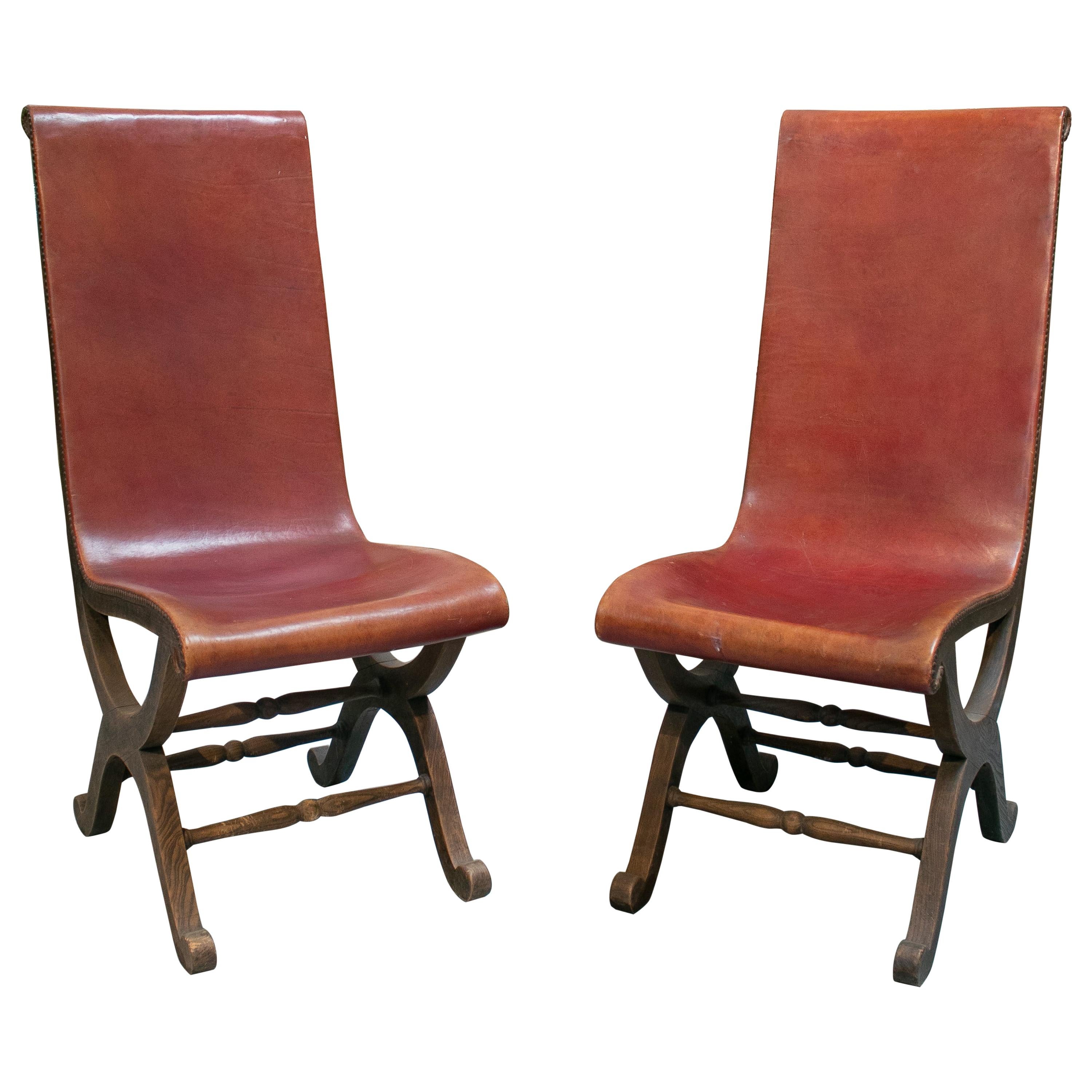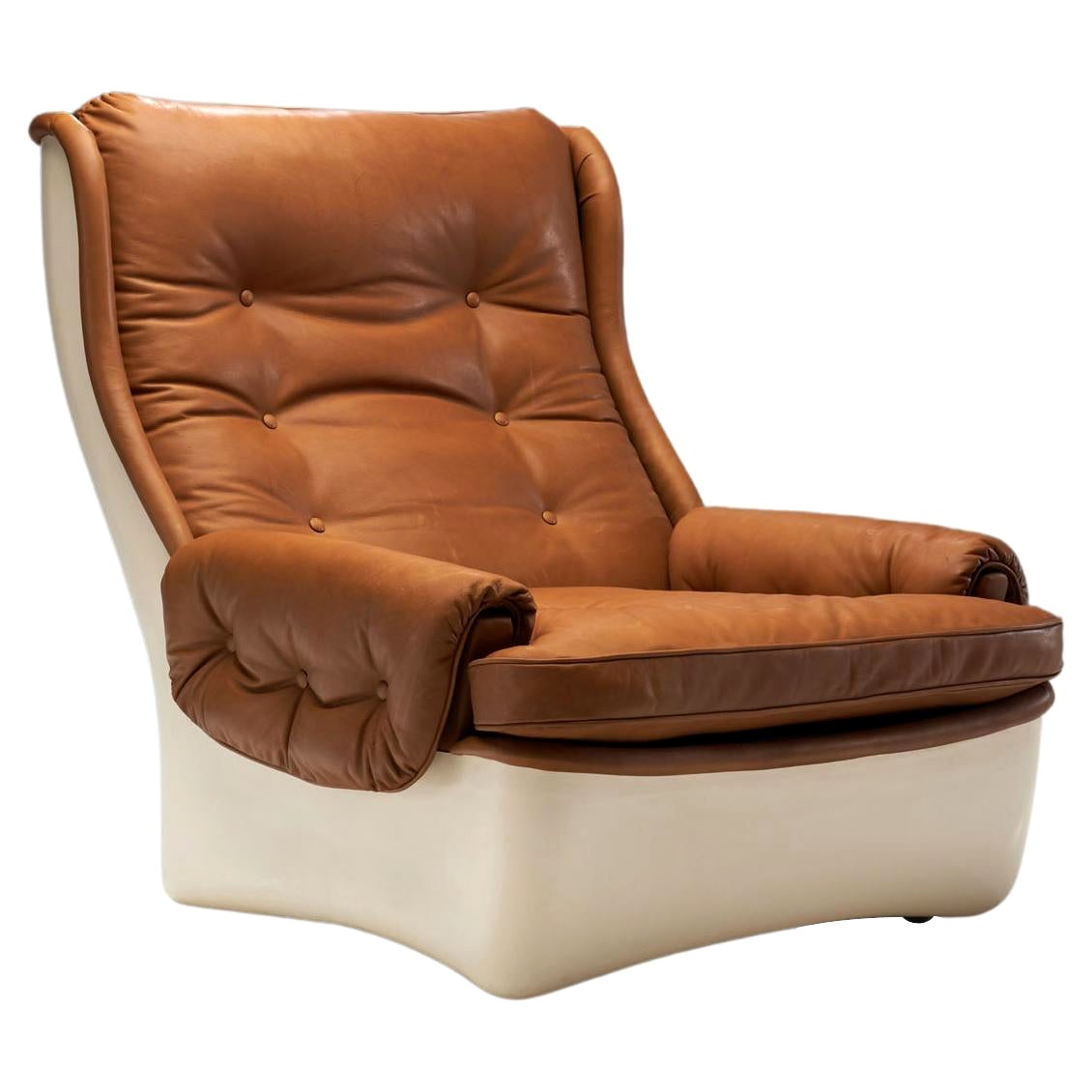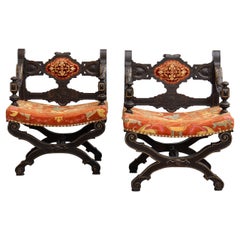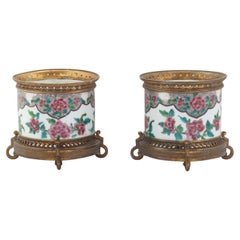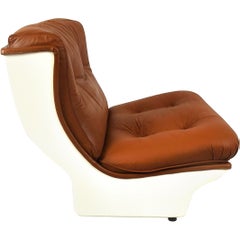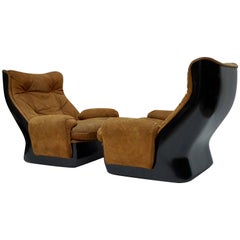
Pair of 1970s Red Leather Low Soft Chairs by Airborne
View Similar Items
Want more images or videos?
Request additional images or videos from the seller
1 of 10
Pair of 1970s Red Leather Low Soft Chairs by Airborne
About the Item
- Creator:Airborne (Manufacturer)
- Dimensions:Height: 26.38 in (67 cm)Width: 37.01 in (94 cm)Depth: 35.44 in (90 cm)Seat Height: 14.97 in (38 cm)
- Sold As:Set of 2
- Materials and Techniques:
- Place of Origin:
- Period:
- Date of Manufacture:circa 1970
- Condition:Wear consistent with age and use. Minor scratches, consistent with age.
- Seller Location:Saint-Ouen, FR
- Reference Number:1stDibs: LU261237786343
About the Seller
4.9
Vetted Seller
These experienced sellers undergo a comprehensive evaluation by our team of in-house experts.
1stDibs seller since 2017
57 sales on 1stDibs
Typical response time: 1 hour
More From This SellerView All
- Pair of Porcelain Vases Ormolu-Mounted in Lamps by Gagneau Paris XIXth CenturyBy Gagneau ParisLocated in Saint-Ouen, FRPair of large Japanese Porcelain Cone Shape Vases with Imari decoration Important mounts in ormolu and gilded metal, the base decorated with a laurel wreath, the upper part of falling leaves and a frieze of knotted ribbon. The mounts signed Gagneau, 115 R. Lafayette. Circa 1860 With their original aluminium bulb cover and original gilding Vase it self Height 47 cm The Gagneau Company is one of the most famous lighting factories in Paris in the nine-teenth century, established in 1800 at 25 rue d'Enghien in Paris and later at 115 rue de Lafayette. She has participated in many exhibitions throughout this century. She began in 1819 with the Exposition des Produits de l'Industrie and later participated in the Universal Exhibitions where she was part of the jury in the category of art bronzes (class 25) at the Universal Exhibition in Paris in 1889. "Imari" was simply the trans-shipment port for Arita wares, from where they went to the for-eign trading outposts at Nagasaki. It was the kilns at Arita which formed the heart of the Japanese porcelain industry. Arita's kilns were set up in the 17th century, after kaolin was discovered in 1616. A popular legend attributes the discovery to an immigrant Korean potter, Yi Sam-Pyeong (1579–1655), although most historians consider this doubtful. After the discovery, some kilns began to produce revised Korean-style blue and white porcelains, known as Early Imari, or "Shoki-Imari". In the mid-17th century, there were also many Chinese refugees in northern Kyushu due to the turmoil in China, and it is said that one of them brought the overglaze enamel coloring technique to Arita. Thus Shoki-Imari developed into Ko-Kutani, Imari, and later Kakiemon, which are sometimes taken as a wider group of Imari wares. Ko-Kutani was produced around 1650 for both export and domestic market.Kutani Ware is characterized by vivid green, blue, purple, yellow and red colors in bold designs of landscapes and nature. Blue and white porcelain pieces continued to be produced and they are called Ai-Kutani. Ko-Kutani Imari for the export market usually adopted Chinese design structure such as kraak style, whereas Ai-Kutani for the domestic market were highly unique in design and are ac-cordingly valued very much among collectors. Ko-Kutani style evolved into Kakiemon-style Imari, which was produced for about 50 years around 1700. Kakiemon was characterized by crisp lines, and bright blue, red and green designs of dramatically stylized floral and bird scenes. Imari achieved its technical and aes-thetic peak in the Kakiemon style, and it dominated the European market. Blue and white Kakiemon is called Ai-Kakiemon. The Kakiemon style transformed into Kinrande in the 18th century, using underglaze blue and overglaze red and gold enamels, and later additional colors. Imari began to be exported to Europe when the Chinese kilns at Jingdezhen were damaged in the political chaos and the new Qing dynasty government halted trade in 1656–1684. Ex-ports to Europe were made through the Dutch East India Company, and in Europe the des-ignation "Imari porcelain" connotes Arita wares of mostly Kinrande Imari. Export of Imari to Europe stopped in mid-18th century when China resumed export to Europe, since Imari was not able to compete against Chinese products due to high labor costs. By that time, however, both Imari and Kakiemon styles were already so popular among Eu-ropeans that the Chinese export porcelain copied both, a type known as Chinese Imari. At the same time, European kilns, such as Meissen and English potteries such as Johnson Bros. and (Royal) Crown Derby, also imitated the Imari and Kakiemon styles. Export of Imari surged again in late 19th century (Meiji era) when Japonism flourished in Europe.Thus, in the western world today, two kinds of true Japanese Imari can...Category
Antique 1880s French Japonisme Table Lamps
MaterialsBronze
- Pair of French Napoléon III Curule ArmchairsLocated in Saint-Ouen, FRPair of French Napoléon III Curule Armchairs Moulded, carved, blackened wood, enhanced with gold. Open-banded back decorated with interlacing, X-bas...Category
Antique 1890s French Napoleon III Armchairs
MaterialsWood, Trimming
- French 19th Century Pair of Porcelain Cache-PotsLocated in Saint-Ouen, FRPair of polychromed hand painted porcelain with Japonisme floral decoration Ormolu-mounted with open-worked base and rim Louis XVI Style circa 1880.Category
Antique 1870s French Chinoiserie Planters, Cachepots and Jardinières
MaterialsOrmolu
$1,933 Sale Price / set20% Off - 19th Century Pair of Neo Greek Sellettes en AthéniennesBy Ferdinand BarbedienneLocated in Saint-Ouen, FRA French 19th century very unusual and decorative pair of neo greek gilt and patinated cast iron sellettes en athéniennes With red griotte marble bassin...Category
Antique 1870s French Greek Revival Pedestals
MaterialsGriotte Marble, Metal, Ormolu
- A French 19th Century Pair of Louis XIV Style StoolsLocated in Saint-Ouen, FRA French 19th Century Pair of Large Rectangular Stools natural and carved wood. The 4 sheaths feet carved and linked by a stretcher. Louis XIV Style Napoléon III Period Circa 1880 Used Petit Point Tapestry Upholstery If the stool played a great role at the court of Louis XIV, it was also the pretext of a war... that of the stools precisely, recounted by Saint-Simon. The Duchesses fought and the Duchesse became a seat with very curious forms. There were benches and chairs, then armchairs, not to mention stools. A seat dear to the duchesses. Some fought for one, to sit in the presence of the queen. Standing, while others, sometimes cousins, were seated, was intolerable. The Duke of Saint-Simon was pleased to recount the «war of stools». This one was provoked by Mme de Chevreuse who sat, without any way, before Queen Anne of Austria...Category
Antique 1880s French Louis XIV Stools
MaterialsBeech
- A Very Fine Quality 19th Century French Pair of CandlesticksLocated in Saint-Ouen, FRVery Fine French 19th Century Pair of Candlesticks In ormolu, very finely chiseled and decorated with knotted garlands, branches of leafy flowers, spokes of hearts, leaves of water...Category
Antique 1870s French Louis XVI Candlesticks
MaterialsOrmolu
You May Also Like
- Space age leather lounge chair by Airborne international, 1970sLocated in HEVERLEE, BEStriking space age lounge chair by Airborne international. The chair consists of a white fiberglass shell upholstered with brown butonned leather. It sits as comfortable as it look...Category
Vintage 1970s French Space Age Lounge Chairs
MaterialsLeather, Fiberglass
- Leather Lounge Chairs by AirborneLocated in Denton, TXPair of black leather with chrome chairs lounge chairs by Airborne, France.Category
20th Century French Mid-Century Modern Lounge Chairs
MaterialsChrome
$6,500 / set - Two Lounge Chairs by Airborne International, circa 1970sBy Airborne InternationalLocated in Antwerp, BETwo lounge armchairs on casters consisting by French manufacturer Airborne International. The shells are made from black fibreglass and the seating is covered in leather buttoned uph...Category
Mid-20th Century French Mid-Century Modern Lounge Chairs
MaterialsLeather, Fiberglass
- Two Lounge Chairs by Airborne International, circa 1970sBy Airborne InternationalLocated in Antwerp, BETwo lounge armchairs on casters consisting by French manufacturer Airborne International. The shells are made from black fibre glass and the seating is covered in leather buttoned up...Category
Mid-20th Century French Hollywood Regency Lounge Chairs
MaterialsLeather, Fiberglass
- Pair of Rare 60's Organic Curved Lounge Chairs by Airborne France New UpholsteryLocated in bergen op zoom, NLPair of rare 1960's organic curved lounge chairs by Airborne France fully restored with new foam and De Ploeg 'Monza' Boucle upholster...Category
Vintage 1960s French Mid-Century Modern Lounge Chairs
MaterialsMetal
- Pair of Easy Chairs by Paul Geoffroy for Airborne, with Hermès Fabrics, 1950sBy Paul GeoffroyLocated in Frankfurt am Main, DEYou may know these easy chairs designed by Paul Geoffroy in the early 1950s for Airborne, France. But you’ve never seen Hermès fabric on these chairs: we decided to go full luxury. W...Category
Mid-20th Century French Mid-Century Modern Lounge Chairs
MaterialsMetal
Recently Viewed
View AllMore Ways To Browse
Herman Miller Eames Chair With Ottoman
Mid Century Barcelona Chair
Danish Chair With Cane Seat
Regency Style Lounge Chairs
Lounge Arm Chairs With Ottoman
Vintage French Upholstered Chair
Black Eames Lounge Ottoman
1940s Fritz Chair
Channel Chairs Pair
1950 Italian High Back Chair
Gio Ponti Walnut Chair
Pattern Pair Lounge Chairs
High Back Lounge Chair And Ottoman
Vintage Rattan Living Room Sets
Chrome Leather Lounge Chair Tubular
Danish Leather Lounge Chair And Ottoman
Eames Chair And Ottoman Original
In Style Of Royere
